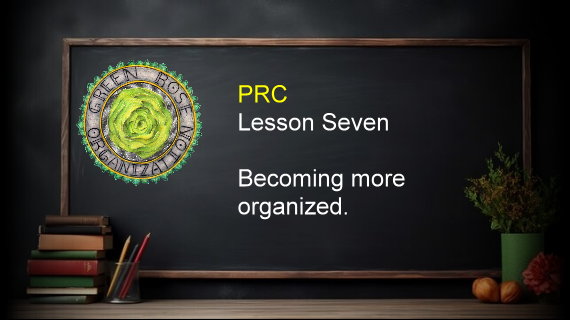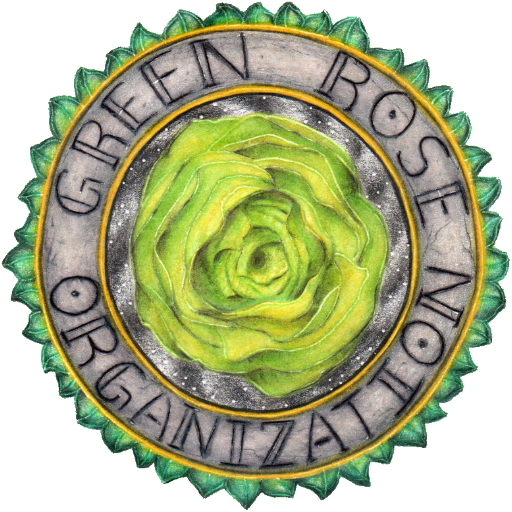
BECOMING MORE ORGANIZED
7 KEY STRATEGIES TO BECOMING MORE ORGANIZED IN LIFE
Effective organizational skills can help you manage your time, tasks, and resources efficiently, leading to greater productivity and less stress. Here are some key organizational skills and strategies to consider: 1. Time Management—Prioritize Tasks: Use methods like the Eisenhower Matrix to distinguish urgent tasks from important ones. Plan Ahead: Create daily, weekly, and long-term schedules to stay on track with goals. Set Deadlines: Establish specific deadlines for tasks and stick to them. 2. Decluttering—Physical Space: Keep workspaces tidy to minimize distractions. Digital Organization: Organize files into folders and regularly clear unnecessary emails or documents. Minimalism: Focus on keeping only what is truly necessary and valuable. 3. Task Management—To-Do Lists: Maintain clear and actionable task lists. Batch Similar Tasks: Group similar tasks together to maximize efficiency. Break Down Goals: Divide larger projects into smaller, manageable steps. 4. Time Blocking—Assign specific blocks of time for individual tasks or activities to maintain focus and momentum. 5. Communication—Use tools like shared calendars and task management apps to coordinate with others and ensure alignment. 6. Attention to Detail—Double-check work for errors and maintain a consistent process for quality assurance. 7. Adaptability—Be flexible in adjusting plans when priorities or circumstances change.
11 STEPS TO IMPROVE TIME MANAGEMENT
Here’s a structured guide to mastering time management, detailed step-by-step for maximum effectiveness: Step 1: Set Clear Goals—Define Priorities: Start by identifying your short-term, medium-term, and long-term goals. Use tools like SMART goals (Specific, Measurable, Achievable, Relevant, Time-bound). Break Goals Down: Divide larger objectives into manageable tasks or milestones. Step 2: Create a Master Schedule—Use a Calendar: Leverage digital tools like Google Calendar or Outlook. Block specific times for tasks and include buffer time for unexpected delays. Daily Planning: Each morning, plan the day by allocating time slots for priorities and leaving space for flexibility. Step 3: Prioritize Tasks—Eisenhower Matrix: Categorize tasks into 4 quadrants: 1. Urgent and Important (Do immediately) 2. Important but Not Urgent (Schedule for later) 3. Urgent but Not Important (Delegate to someone else) 4. Neither Urgent nor Important: Eliminate.** Remember to Focus on High-Impact Activities:** Concentrate on tasks that align with your goals and values. Step 4: Use Time-Blocking—Allocate specific blocks of time for individual tasks or themes (e.g., focus time, meetings, creative work). Stick to these blocks without multitasking. Step 5: Build Daily Habits—Start with a Morning Routine: Begin each day with activities that set the tone (exercise, meditation, or reviewing priorities). Plan the Night Before: Review what needs to be tackled the next day for a smoother start. Step 6: Monitor and Optimize—Track Your Time: Use apps like Toggl or Clockify to understand where your time goes. Analyze Patterns: Identify inefficiencies, distractions, or habits that waste time. Adapt as Needed: Adjust schedules and priorities as life circumstances change. Step 7: Learn to Delegate—Hand over tasks that others can handle to free yourself for higher-value work. Step 8: Eliminate Distractions—Set Boundaries: Limit interruptions by silencing notifications and setting “Do Not Disturb” hours. Design a Focus-Friendly Environment: Keep your workspace organized and distraction-free. Step 9: Use Productivity Tools—Task Management Apps: Tools like Todoist or Asana help organize and track tasks. Automation: Automate repetitive tasks to save time. Step 10: Build in Breaks—Practice Pomodoro Technique: Work for 25 minutes, then take a 5-minute break. Schedule longer breaks during the day to recharge and maintain efficiency. Step 11: Review and Reflect—End-of-Day Review: Reflect on what was accomplished and what can be improved. Weekly Adjustments: Reassess priorities and tweak the schedule for the coming week.
S.M.A.R.T. GOALS EXPLAINED IN DETAIL
SMART goals are a framework designed to help you set clear, actionable, and achievable objectives. The acronym S.M.A.R.T. stands for Specific, Measurable, Achievable, Relevant, and Time-bound. Here’s a detailed breakdown: 1. Specific—What this means: Your goal should be clear and well-defined. Ambiguity leads to confusion and lack of focus. Key Questions to Answer: What exactly do I want to accomplish? Who is involved in achieving the goal? Why is this goal important to me? Example: Vague Goal: “I want to get healthier.” Specific Goal: “I want to improve my fitness by running three times a week.” 2. Measurable—What this means: The goal should include criteria for tracking progress and determining success. Key Questions to Answer: How will I measure progress? How will I know when the goal is achieved? Example: Non-Measurable Goal: “I want to save more money. Measurable Goal: “I want to save $5,000 in my emergency fund within 12 months.” 3. Achievable—What this means: The goal should be realistic, given your current resources, skills, and constraints. It should stretch your abilities but remain possible. Key Questions to Answer: Do I have the resources, time, and capabilities to achieve this goal? If not, what do I need to adjust? Example: Unrealistic Goal: “I want to run a marathon next month with no prior training.” Achievable Goal: “I want to complete a 10K race within six months with consistent weekly training.” 4. Relevant—What this means: Your goal should align with your broader life objectives, values, and priorities. Key Questions to Answer: Why is this goal important? Does it align with my long-term ambitions or personal values? Example: Irrelevant Goal: “I want to learn French because my friend is doing it.” Relevant Goal: “I want to learn French to prepare for a work assignment in Paris next year.” 5. Time-Bound—What this means: The goal should have a specific deadline or timeframe to create a sense of urgency and help you stay focused. Key Questions to Answer: When do I want to achieve this goal? What can I do today, this week, or this month to move toward it? Example: Open-Ended Goal: “I want to write a book someday.” Time-Bound Goal: “I want to write the first draft of my novel by December 31st.” Putting It All Together—A well-crafted SMART goal might look like this: “I will write a 1,500-word article on leadership strategies by May 15th, dedicating two hours each evening to research and writing.”

